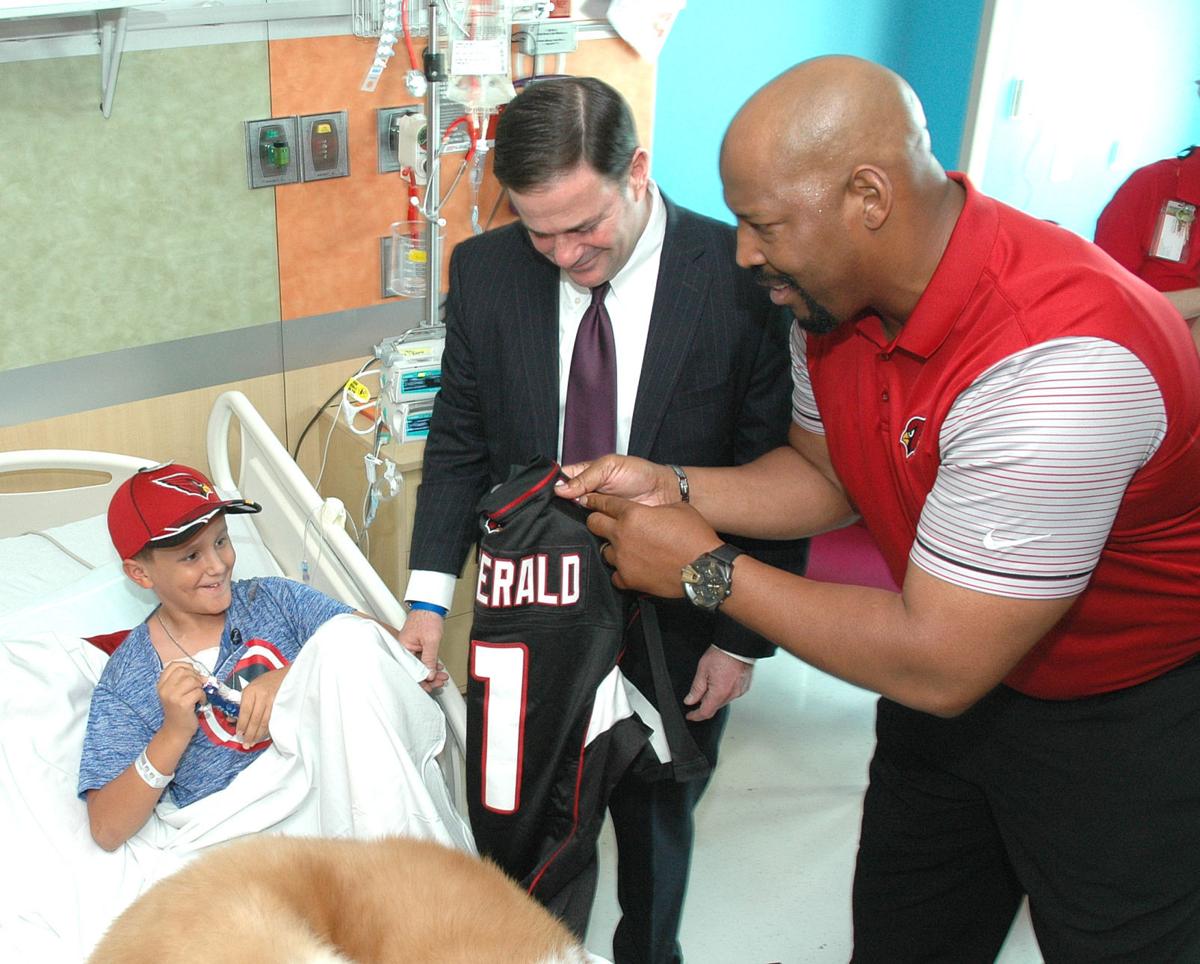Gov. Doug Ducey may tap the state’s “rainy day fund” to keep health-care coverage for 23,000 Arizona children until Congress finally acts.
The governor said Tuesday that both the House and Senate are weighing legislation to restore funding for the Children’s Health Insurance Program. It provides nearly free care for children in families earning up to twice the federal poverty level, or about $40,840 a year for a family of three.
Cash for CHIP ran out when the federal fiscal year ended Sept. 30.
In the interim, the federal Centers for Medicare and Medicaid Services has used unspent dollars from the just-ended budget year to keep the program alive. But Christina Corieri, the governor’s health adviser, said those funds are expected to dry up by the middle of December.
After that?
The Arizona law that accepts federal dollars for what is known in the state as KidsCare, spells out that if the federal government ultimately stops funding the program, the state has to stop enrolling children. That’s exactly what happened in 2010 when Arizona lawmakers decided they did not want to pay the state’s 25 percent share.
Lawmakers voted last year to reinstate KidsCare, but only after Congress agreed to pick up the full cost, as least through the end of the federal budget year. The most recent figures show 23,199 children enrolled.
It is the failure so far to approve the $15 billion annual appropriation to care for 9 million children nationwide going forward that again places health care at risk.
“We want to see KidsCare continued,” the governor said Tuesday after visiting children on Halloween at Phoenix Children’s Hospital. And Ducey said he has “every confidence” that Congress will act before the funds run out.
But the governor said the state has the ability to deal with circumstances “as they happen.”
“It’s part of the reason we’ve been fiscally responsible,” he said. “That’s why we’ve grown the rainy-day fund.”
Ducey would not provide specifics.
“What I don’t want to do is negotiate what we’re going to do in the budget in these press gaggles,” he told reporters. “But when you look at what we’ve done in the past and where we’ve put our priorities, you’ll see this is important for us.”
What’s formally known as the “budget stabilization fund” currently has about $460 million.
That would more than cover any interim costs. In September, the state received $6 million in federal funds for KidsCare.
But with increasing enrollment since the freeze was lifted, the governor’s office pegs the cost for October through December at $20 million.
Ducey, however, would need legislative approval to shift around those dollars.
An aide to House Speaker J.D. Mesnard said his boss does not want to comment until he sees more details. There was no immediate response from Senate President Steve Yarbrough.
Ducey’s staff is exploring another option, one he may be able to do on its own. It is based on doing a bit of shifting of dollars — and children — among programs.
The Arizona Health Care Cost Containment System, the state’s Medicaid program, covers individuals and families earning up to 138 percent of the federal poverty level.
But here’s the thing.
The federal government pays about two-thirds of the cost of those up to the federal poverty level. But under the Affordable Care Act, the feds pick up the entire tab for those in the 100 to 138 percent range.
Corieri said while waiting for Congress to act, the state could pay to cover all the children in that 100 to 138 percent band from KidsCare to AHCCCS. She said each month the state makes that shift frees up enough money to cover everyone else for another three months.
And she said that when Congress finally does refinance the CHIP program it is likely to approve “backfill” dollars to reimburse the state for any funds it spent providing care in the interim.
Ducey’s current desire to keep KidsCare alive is the latest in what has been a politically mixed relationship between Arizona and the federal government on the issue.
Congress approved CHIP in 1997 to help children in families who don’t qualify for Medicaid but cannot afford private health insurance.
Arizona did not join until four years later when Republican Gov. Jane Hull convinced lawmakers the program was a good deal. She noted the federal government was offering $3 for every dollar the state provided, better than the regular Medicaid program.
In 2010, however, with the state facing a deficit, the Republican-controlled Legislature decided Arizona could not afford even its 25 percent match. They approved a freeze on new sign-ups, though those already in the program could stay.
The result was that enrollment, which had reached 45,000, dropped to fewer than 1,000.
Congress last year agreed to pick up the full cost. But even then, Ducey was not interested in restoring KidsCare.
But he was outflanked when Rep. Regina Cobb, R-Kingman, attached restoration of the program to something Ducey and other GOP lawmakers wanted: changes to the program to allow more parents to use public dollars to send their children to private and parochial schools.
Enrollment has been climbing steadily since then, though it is not yet back to pre-freeze levels.
The legislation, however, has the provision requiring a new enrollment freeze if Congress ultimately fails to restore full funding.





